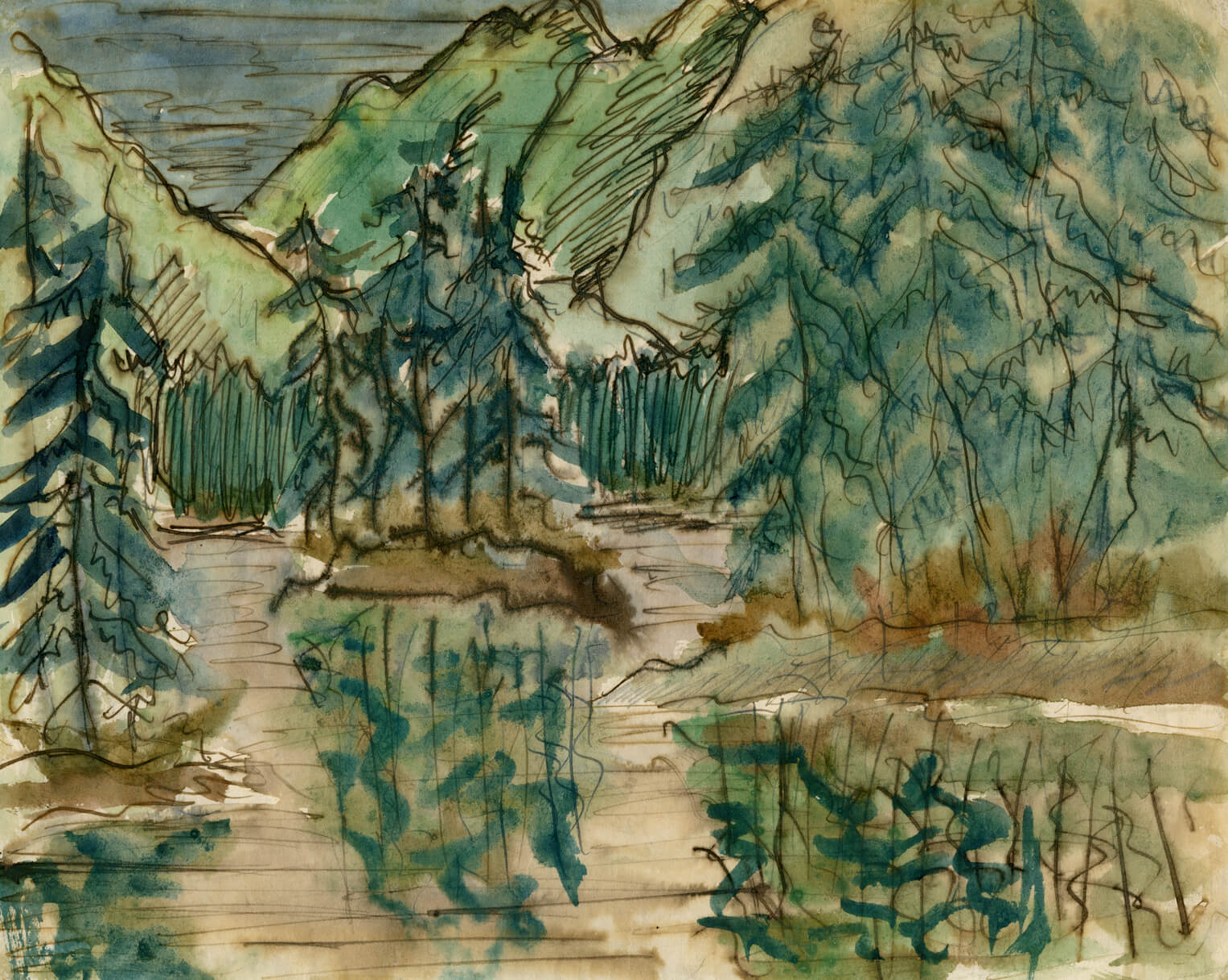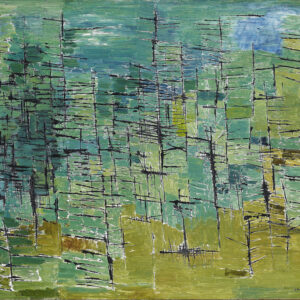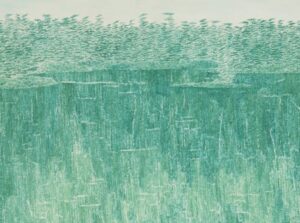Twelve Mile Lake 1944

Kazuo Nakamura, Twelve Mile Lake, 1944
Watercolour, pen, and ink on paper, 19.3 x 24.4 cm
Canadian War Museum, Ottawa
Twelve Mile Lake is one of the works Kazuo Nakamura painted at Tashme, where he and his family were interned as “enemy aliens” from 1942 to 1944, shortly after Canada declared war on Japan. The scene depicts a lake ringed by forest and mountains, whose reflections appear in the still waters. Like most of the watercolours he did at Tashme, the colours are dark because Nakamura painted at dusk or at night, in the few moments of free time he had between cutting wood all day and attending his high school night classes.
The Tashme landscapes presented Nakamura with new challenges. Whereas he used the streets and buildings of Vancouver to structure his urban scenes and the rows of cultivated farmlands outside that city to ground his early landscapes (Strawberry Farm, c.1941), the lakes, forests, and mountains of the British Columbia interior seemed to offer nothing but a chaotic mess. Yet art allowed Nakamura to better understand and control his new surroundings, and to escape the events that had torn him away from his life in Vancouver. Ironically, Nakamura’s depictions of the camp, in paintings like Tashme at Dusk, July/August 1944, show an ordered world, in contrast to the wilds of the B.C. interior.

Twelve Mile Lake is arguably the most accomplished of the Tashme landscapes. The high horizon, an inevitable consequence of the mountainous region, allows Nakamura to dispense with any thoughts of applying linear perspective. But he continues to generate a dialogue between depth and surface, an effect found in the Vancouver works. The dark coloration, high horizon and mountains in the background, and the foliage of the trees that act as a screen, all serve to flatten the image. The open lake, however, draws the eye into the picture, aided by the reflections on the water.
The landscape with reflections on a still lake would become a dominant theme of Nakamura’s signature paintings of the late 1950s and the 1960s. Blue Reflections, B.C., 1964, is another lake surrounded by trees and forest, the water luminous against the darker background. Even the technique in Twelve Mile Lake, with its spidery network of lines to describe the trees, became a key feature of later works, as can be seen in Forest, 1953.
There is a tantalizing parallel between Twelve Mile Lake and works by Canadian painter and printmaker David Milne (1882–1953), such as Pink Reflections, Bishop’s Pond, 1920, which also has a high horizon line and uses trees to flatten the background and the overall picture plane. And in both Nakamura’s and Milne’s works, the reflections on the water function as a perspective device. It is difficult to establish where Nakamura might have seen Milne’s work for the first time, but an invitation to a 1980 National Gallery of Canada exhibition of Milne’s prints was found among Nakamura’s papers at the time of his death. If Milne was not a direct influence, Nakamura certainly felt an affinity for his work.

 About the Author
About the Author
 More Online Art Books
More Online Art Books
 Acknowledgements
Acknowledgements